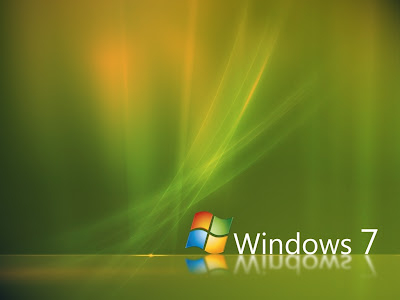 Microsoft’s latest operating system, Windows 7, comes in six different versions with several windows 7 interesting features. This articles brings out a list of features that are common in all the editions of Windows 7.
Microsoft’s latest operating system, Windows 7, comes in six different versions with several windows 7 interesting features. This articles brings out a list of features that are common in all the editions of Windows 7.Windows Search:
Windows Search uses the index whenever you use the search box on the Start menu – in the Search Home folder, in libraries, and in locations that are part of a homegroup.
Desktop Gadgets:
Choose from default gadgets in Desktop Gadget Gallery; you can also download and install additional third-party gadgets.
Windows shell enhancements:
Aero Snap, Jump Lists, and Windows Flip.
Power management:
Users can edit default power schemes as well as create custom schemes.
Windows ReadyBoost:
Support for multiple USB flash drives used as backup memory to improve performance.
Device Stage:
A tool for managing and configuring user installed devices such as cameras, phones, and printers.
Sync Center:
Manages synchronization with mobile devices.
Windows Easy Transfer:
Transfer files and settings from an old computer to a new one.
Windows Speech Recognition: Enter and edit text, and issue voice commands using a microphone.
Ease of Access features:
High-contrast themes, Ease of Access Center, Magnifier, Narrator, and On-Screen Keyboard.
Virtual hard drive: Create a new VHD; attach an existing VHD.
Internet Explorer 8: Default Internet browser for Windows 7.
Games Explorer with basic games: Default games in Windows 7 FreeCell, Hearts, Minesweeper, Purble Place, Solitaire, and Spider Solitaire.
Basic productivity applications: Windows 7 includes Calculator, Paint, Notepad, and WordPad.
Windows Fax and Scan: It helps you while scanning documents, sending and receiving faxes.
Windows PowerShell and Integrated Scripting Environment: Command-line shell and graphical host application for scripting administrative tasks.
XPS Document Writer and Viewer: Provides capability to create and view documents using XML Paper Specification.
User Account Control: Also includes Protected Mode in Internet Explorer 8.
Action Center: It provides messages and updates about security and maintenance issues.
Windows Defender: Defend your PC against Anti-Spyware.
Windows Firewall: Blocks unsolicited inbound network connections; includes advanced security interface to manage inbound and outbound connections.
Parental Controls: Set time limits on computer usage, and block access to specific games and applications.
Windows 7 Remote Assistance: It allows direct network connections between two Windows PCs for troubleshooting and repair.
Windows Media Player 12: Enjoy music and videos in all different formats.
System Repair Disc/Window Recovery Environment: Provides ability to access troubleshooting/repair environment at startup without requiring original installation media.
Windows Backup: Perform manual or scheduled backups by file type or location, includes ability to create a system image.
Previous Versions: Ability to recover changed or deleted files from automatic or manual restore points and backups.
SMB network connections: Maximum of 20 simultaneous connections. Because each PC or device requires two Server Message Block (SMB) connections, 10 PCs or devices can be connected at once.
Ability to join a Homegroup: Share local resources and access shared resources on other Windows 7 machines that are part of the same Homegroup.
No comments:
Post a Comment